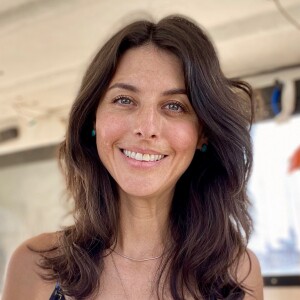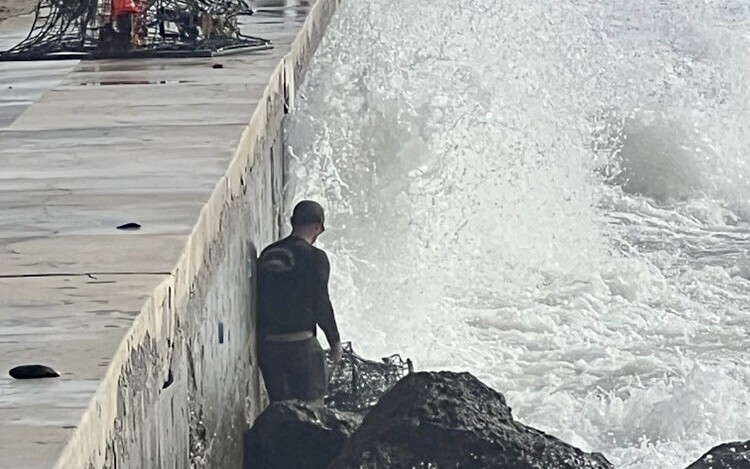Day 1: Jan. 9, 2023
"And the rain descended, and the floods came, and the winds blew…."
My husband Chris Dabney and I hunker down in Ojai, California, a little mountain valley 14 miles from the Ventura coast and 23 miles from Channel Islands Harbor, Chris's home port. I've only seen storms like this during hurricane season in the South, our home in the off-season. "Deluge" is the word for it. We pull up the blinds and trade the TV for rain.
It got me thinking how rainstorms in the South aren't feared like out West. The sub-tropical East Coast is "Lowcountry," sea level flat, and easy to fill with the tides. In California, deep-sloping mountains meet the sea, and in many places, the two are separated by a thin stretch of road called the Pacific Coast Highway that merges with Highway 101.
The section from Ventura to Santa Barbara currently bottlenecks into one working lane, with exits leading to surf breaks, private communities, vista views, and nothing else. Basically, there are few back roads to get around because the Santa Ynez Mountains are in the way.
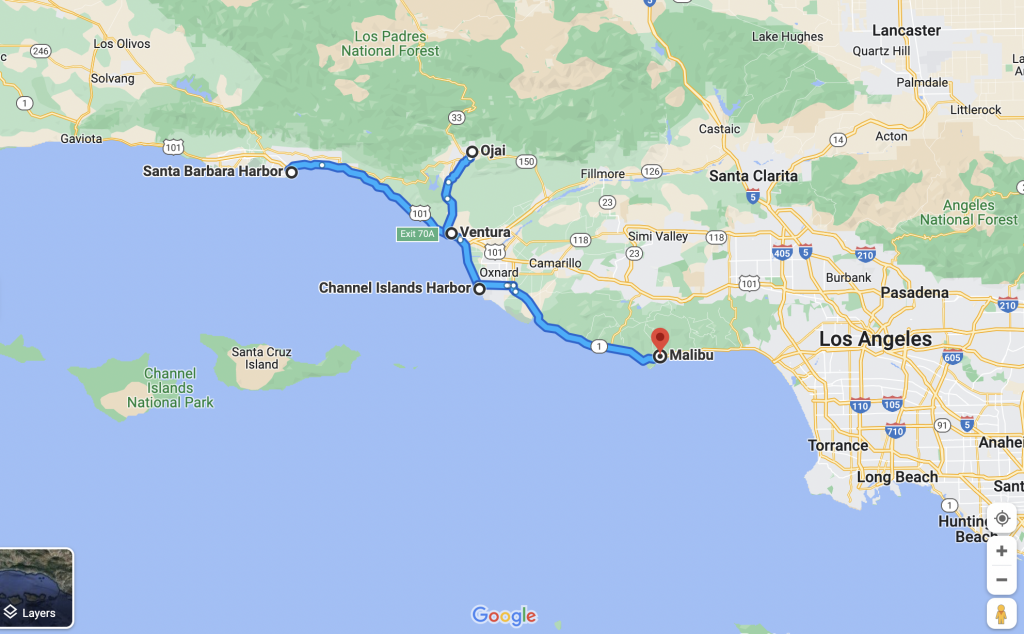 Google Map locations of the fishing families interviewed for this story.
Google Map locations of the fishing families interviewed for this story.
It can be hard to grasp that Southern California, an agricultural pylon for the United States, is actually dry as a bone. We're talking desert vibes. Where velvet green moss grows in the Pacific Northwest, sagebrush, succulents, and more drought-resistant plants cover our hillsides. In other words, the ground ain't used to rain, can't keep up when it pours, and when it hits the mountains, the earth goes with it.
Mudslides in the Golden State mean boulders, Jurassic Park-looking rocks that bring down towering eucalyptus trees and pave paths like snow plows. Detritus glides across the hard dirt so violently that residents nearby can hear the tumble and feel the quake beneath their feet. The difference between rain in the South and our stretch of California is like a bathtub filling with water and a fire hose at full throttle.
We just learned that road closures and forced evacuations are in effect for surrounding areas, which contradicts itself. So, we sit, trapped on the mountain, checking that the oak trees surrounding our home aren't uprooting as our neighbor's across the street. We watch the destruction unfold through local Instagram accounts, feeling a million miles away, and like everyone else, we wait.
Day 2: Jan. 10
Chris and I drive to a bridge over the Ventura River. A place that, heretofore, was a dry, hikable trail but is now roaring underfoot like the Mississippi. Police barricade the opposite end of the bridge, turning people away from a mudslide up the road.
Chris points to waterfalls on the highest peaks, reminiscent of Hawaii if you squint hard enough. It's a mixed bag; the soothing sight of water in the desert and a heavy heart for those on the coast. We watch for a few minutes, then head home before the next storm hits.
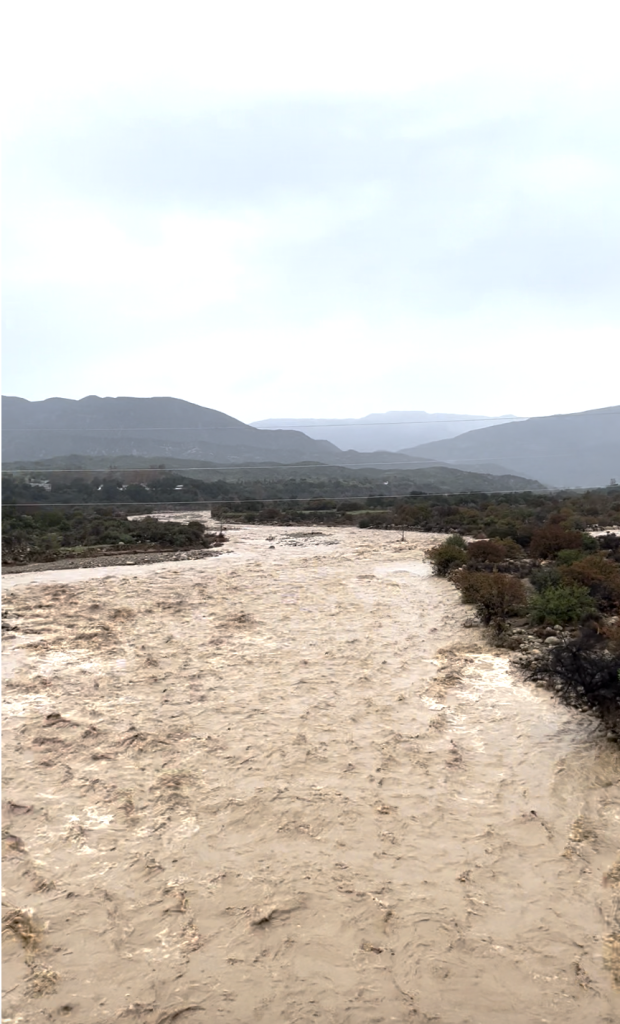 The Ventura River is formally a dry riverbed. Photo by Megan Waldrep.
The Ventura River is formally a dry riverbed. Photo by Megan Waldrep.
Back home, I read messages from two other partners of commercial fishermen who live in Ventura, and the severity of the storm finally sinks in. While roadblocks in Ojai expect to clear by tomorrow, Shelby Stahl, mom of three, the wife of prawn, crab, and black cod fisherman Tyler Stahl, and entrepreneur Lindsey Mickelson Hoadley, mom of two and the wife of urchin and spiny lobster fisherman John Hoadley report other challenges.
"Right now, we are dealing with (Highway 101) closed, so we can't get to the boat," Hoadely said. "The Santa Barbara Harbor bottom is filling in, so boats can't come in and out freely. The harbor is full of debris, and the coastline is demolished. Everyone is just dealing with the natural catastrophe! But we are holding tight and getting a little extra family time in and taking it day by day."
Stahl, whose husband also fishes out of Santa Barbara, reports a different issue. "Tyler was supposed to leave tonight but can't, and our guy who delivers fish has been stuck on the 101 since last night!"
If Santa Barbara is this bad, what does that mean for harbors along the coast? I ask Chris if he's heard from fishermen at the Channel Islands Harbor. No word, he says, but the swell is dying, so he'll have a weather window to check traps before the next storm cell. My heart drops, but I say nothing. It's his job, after all.
"I hope the worst is over," Hoadley messages. "We have some big issues to deal with moving forward. It will be interesting to see how the rest of our lobster plays out."
Later that evening, our neighbor delivers a secondhand report – beachcombers are taking lobsters from traps crashed ashore. Fishermen are out thousands of dollars in gear and commodities, trash and debris cover the beach, and no one is happy. At least the spiny lobsters may be enjoyed. Or even released.
Day 3: Jan. 11, to the time of writing.
I check in with Critters Fresh Seafood, a family operation in Malibu, forty miles south of Ventura. Co-owner Denise Honaker gives me the lowdown and adds that she has "seen a lot" in her forty-plus years with a commercial fisherman. Her husband, Captain Scott Honaker, owner/operator of F/V Critters, and his deck crew, Ryan Koverman and Jimmy Olivarri, are still surveying the damage, carefully unlodging traps from the rocks and surf.
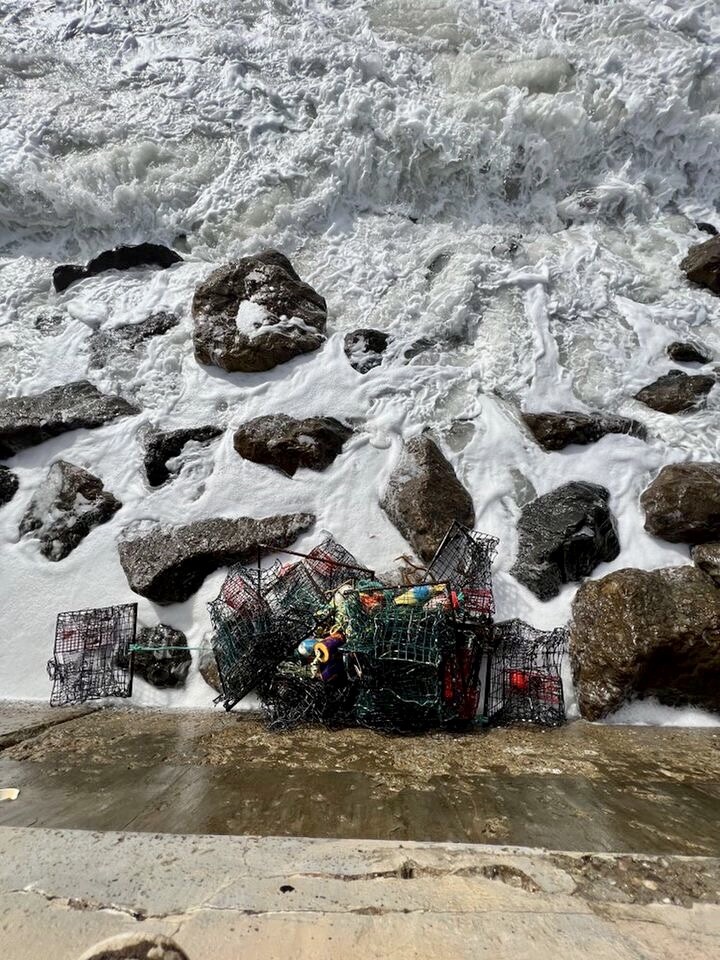 Photo by Critters Fresh Seafood
Photo by Critters Fresh Seafood
"As you know, each trap can cost at least three hundred dollars, and we lost over one hundred. We are still figuring it out," Honaker said. "The cleanup continues, and we will continue to find the traps to make sure the shore is clear of them. We have had so many people in our fishing community, and customers ask how they can help, which is so heart-warming."
Back in Ventura, Stahl jots down the following during a spotty connection on her husband's first trip out. "Hard to tell how the storm affected the fishing," he said. "Big swell and strong currents made it a little harder. I don't know how many fish were lost by long-lining. Lots of debris in the water, trees, bamboo, milk crates, etc. Makes it hard to fish at night with all the debris."
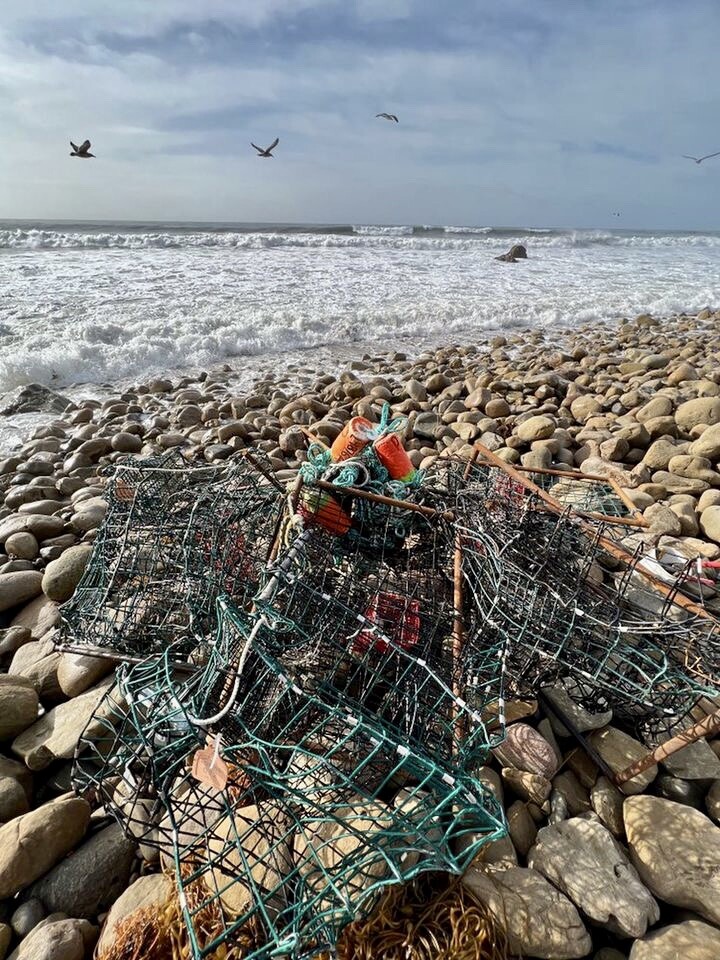 Photo by Critters Fresh Seafood
Photo by Critters Fresh Seafood
Days later, Hoadley checks in. "We faired well overall, thank goodness. John was able to recover a good amount of traps. Now he is displaced out of the S.B. harbor due to the harbor mouth situation and the city not dredging it," Hoadley said. "He's at the Channel Islands Harbor now, but it takes twice as long to get to where he fishes from there. I think the city is supposed to get the dredge here next week."
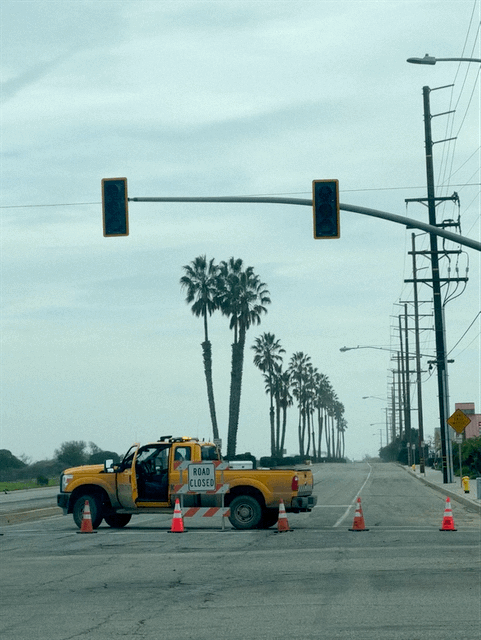
As for me, a week later, I'm still working through the anxiety I felt on Chris's first day back at sea. Preparing for this piece, I drove down the mountain to take a few pictures that you see here. With my journalist hat on, I navigated past detours and flashing signs that screamed "High Surf Warning." Roadblocks brought me to a beach near Ventura Harbor, filled with logs, reeds, and rubbish.
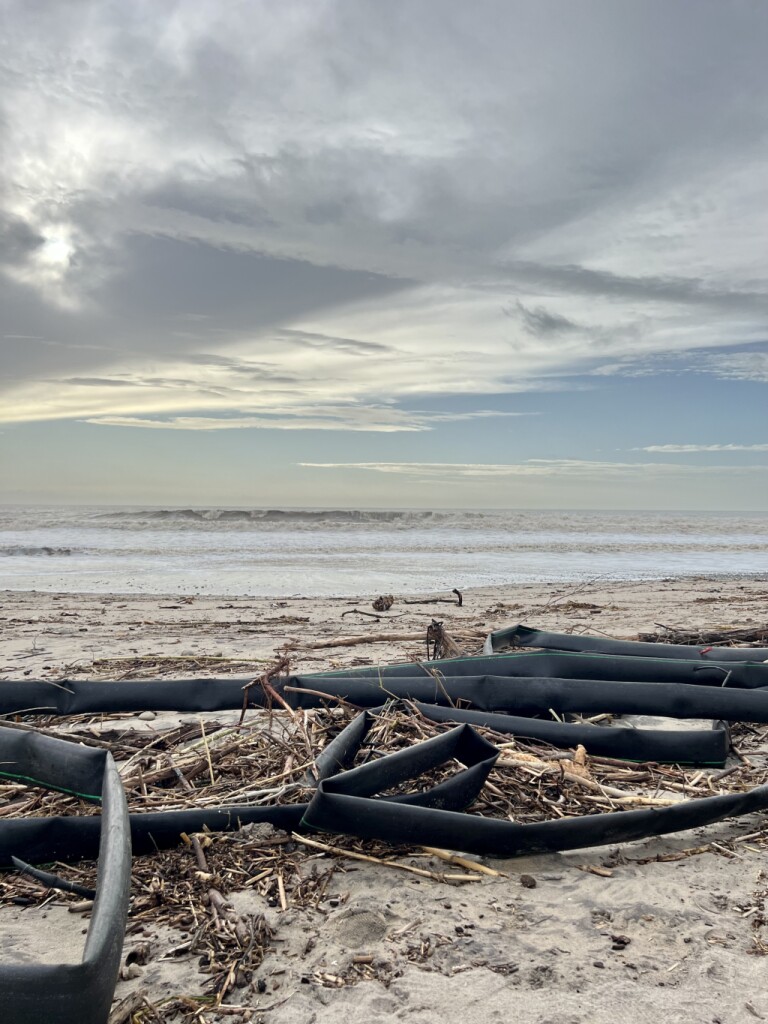
While photographing the mess, a loud boom from the shorepound snapped my attention and took my breath away. Walls of mud curled at the peaks from angry tides, swell, and wind – the aftermath, and a precursor to the next storm simultaneously.
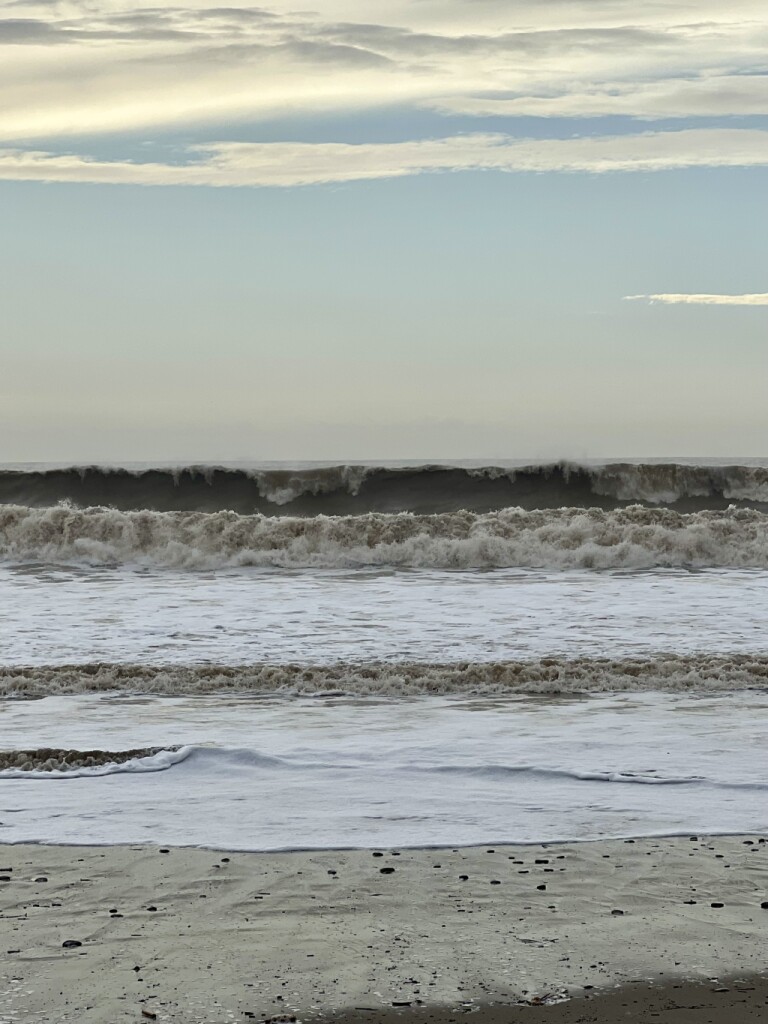
It was then I remembered Chris was out there, fishing. Fear struck my heart like a knife; I could feel the pain from the top of my chest straight through my back. And at that moment, I was no longer a journalist, but a partner of a commercial fisherman, fearing for her fisherman's life.
For more on the storm's effects on partners of commercial fishermen, visit meganwaldrep.com.




